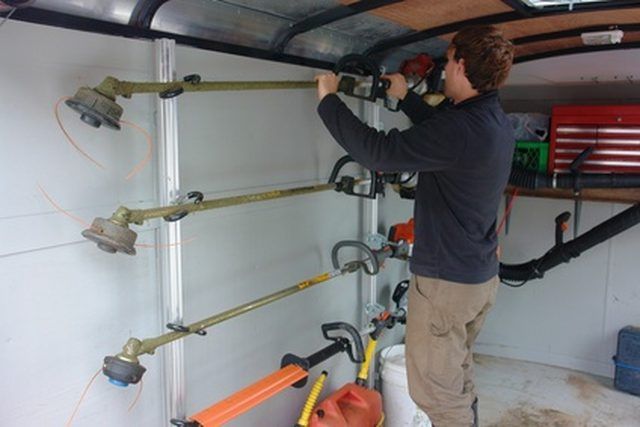Bulbs
Flower Basics
Flower Beds & Specialty Gardens
Flower Garden
Garden Furniture
Garden Gnomes
Garden Seeds
Garden Sheds
Garden Statues
Garden Tools & Supplies
Gardening Basics
Green & Organic
Groundcovers & Vines
Growing Annuals
Growing Basil
Growing Beans
Growing Berries
Growing Blueberries
Growing Cactus
Growing Corn
Growing Cotton
Growing Edibles
Growing Flowers
Growing Garlic
Growing Grapes
Growing Grass
Growing Herbs
Growing Jasmine
Growing Mint
Growing Mushrooms
Orchids
Growing Peanuts
Growing Perennials
Growing Plants
Growing Rosemary
Growing Roses
Growing Strawberries
Growing Sunflowers
Growing Thyme
Growing Tomatoes
Growing Tulips
Growing Vegetables
Herb Basics
Herb Garden
Indoor Growing
Landscaping Basics
Landscaping Patios
Landscaping Plants
Landscaping Shrubs
Landscaping Trees
Landscaping Walks & Pathways
Lawn Basics
Lawn Maintenance
Lawn Mowers
Lawn Ornaments
Lawn Planting
Lawn Tools
Outdoor Growing
Overall Landscape Planning
Pests, Weeds & Problems
Plant Basics
Rock Garden
Rose Garden
Shrubs
Soil
Specialty Gardens
Trees
Vegetable Garden
Yard Maintenance
How to Repair Homelite String Trimmers
How to Repair Homelite String Trimmers. When it comes to repairing a Homelite string trimmer it is always helpful to remember that they only need three simple things to start and run properly: compression, gas, and spark. But if one of these areas is dirty, damaged or has been maintained poorly, than your trimmer will probably malfunction. Storing...

When it comes to repairing a Homelite string trimmer it is always helpful to remember that they only need three simple things to start and run properly: compression, gas, and spark. But if one of these areas is dirty, damaged or has been maintained poorly, than your trimmer will probably malfunction. Storing the trimmer properly and performing regular maintenance and cleaning will solve almost all of your basic problems. Before trying to solve any problem it is helpful to isolate the problem into one of these three categories.
Things You'll Need
Screwdriver
Star wrench
Gas
Toothbrush
Rag
Carburetor cleaner
Air and Compression Test
Use the screwdriver to remove the air filter cover. Pull off the air filter and slap it against a flat surface to clean it. Replace the filter if it can't be cleaned.
Use the screwdriver or star wrench to remove the muffler's cover. Pull out the spark arrestor screen and clean it with the toothbrush and rag. Look inside the muffler to see if there's any debris or dirt inside, and clean if necessary.
Hold the trimmer by its starter string and pull it off the ground. If the starter string is pulled out under the engine's weight, then your air compression is low. Retune the carburetor adjustment screws.
Spark Plug Test
Slide the screwdriver under the rubber spark plug boot and gently wiggle it off the spark plug. This rubber can get brittle with age, so take care in removing it and make sure it's not damaged or loose.
Pour a little gas over the spark plug and clean it with the toothbrush and rag. Check with your manufacturer's gap recommendations and make sure the spark plug is properly gapped.
Place the spark plug into the rubber boot, but don't attach them to the engine. Hold them next to a metal spot on the engine block. Tug on the starter cord and look for a spark across the gap. If there's no spark, replace the spark plug and try again. Test the ignition cable, starter, and starter coil if there's still no spark.
Fuel Test
Drain the fuel tank; clean it with a little carburetor cleaner and the rag and toothbrush.
Disconnect the fuel line from the carburetor and remove the old fuel filter and fuel line. Check the primer bulb for any cracks or damages. Replace all of these if necessary.
Pump the primer bulb seven times; making sure it is full of gas. Start the trimmer (if possible) with the choke on setting one until it pops. Move to setting two and pump the primer bulb twice. Start the trimmer again and let it idle for a few minutes. Move to setting three and start the trimmer, holding down the throttle.
Retune the carburetor's high, low, and idle adjustment screws if the saw starts. Follow the manufacturer's guidelines for all carburetor adjustments.
Disassemble the carburetor and put all of the parts into an overnight carburetor bath. Soak them for one to two days. Scrub them with a heavy brush and replace any worn out parts with a carburetor kit.
Tips & Warnings
Take your Homelite trimmer to a skilled professional if in doubt about any of the suggested repairs.
Most problems can be solved by simply storing and maintaining the trimmer on a regular basis.